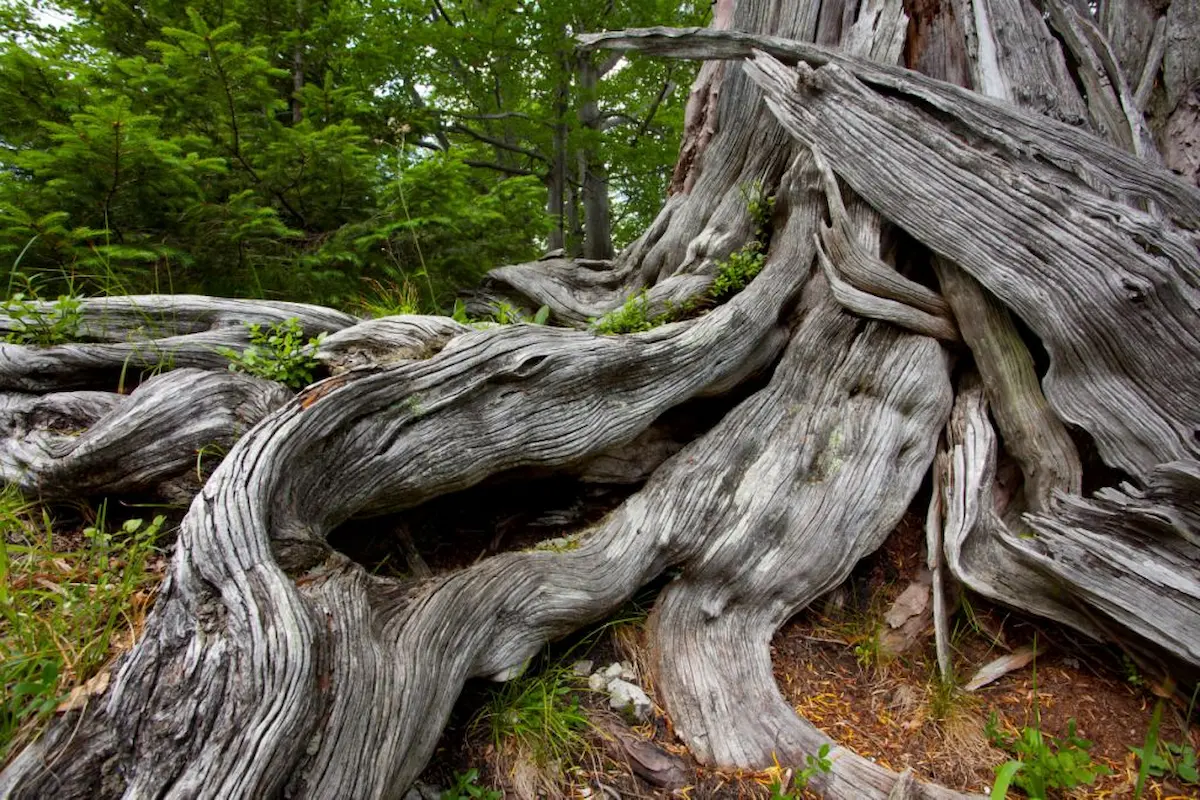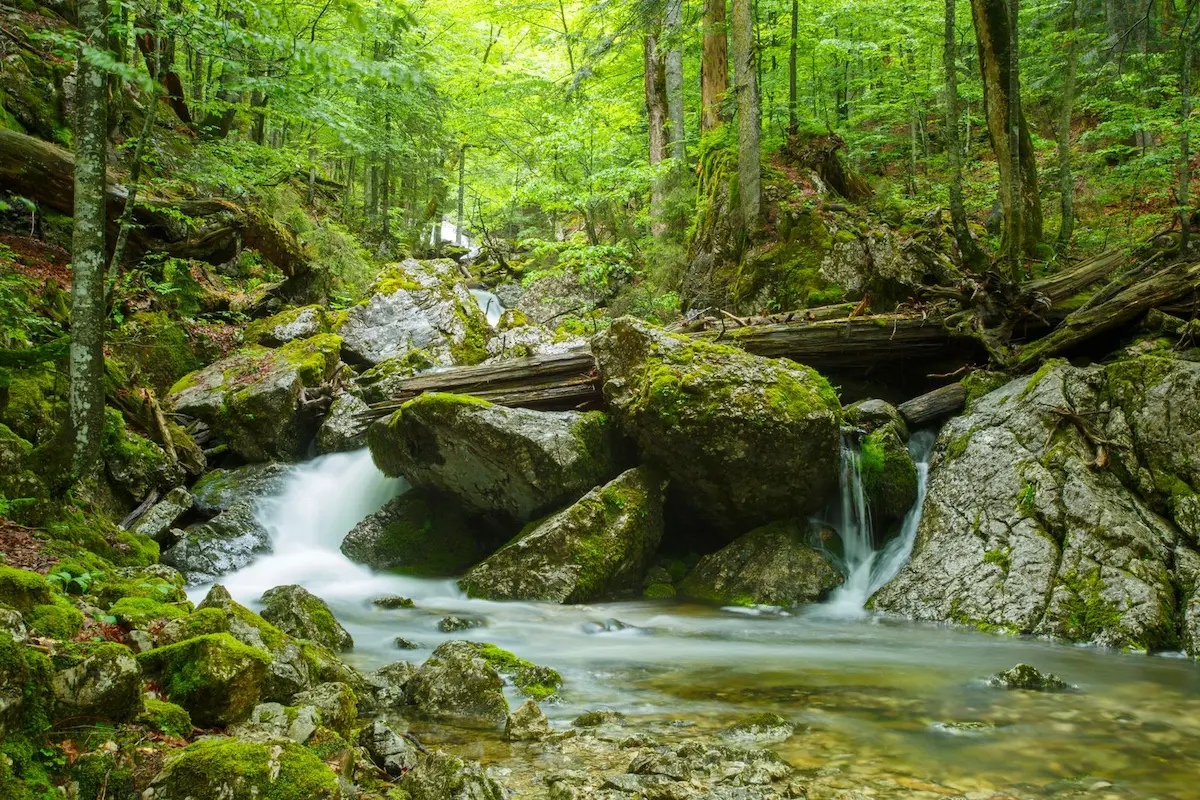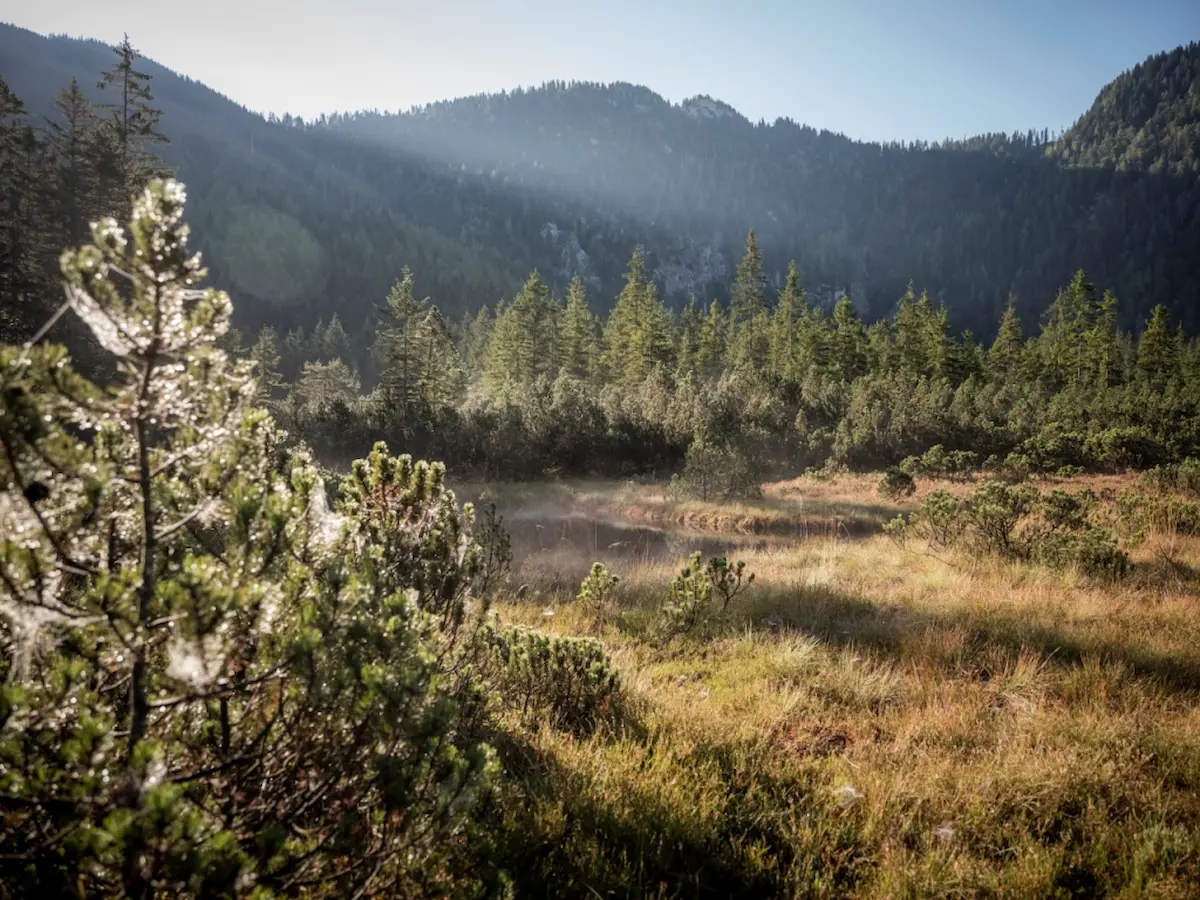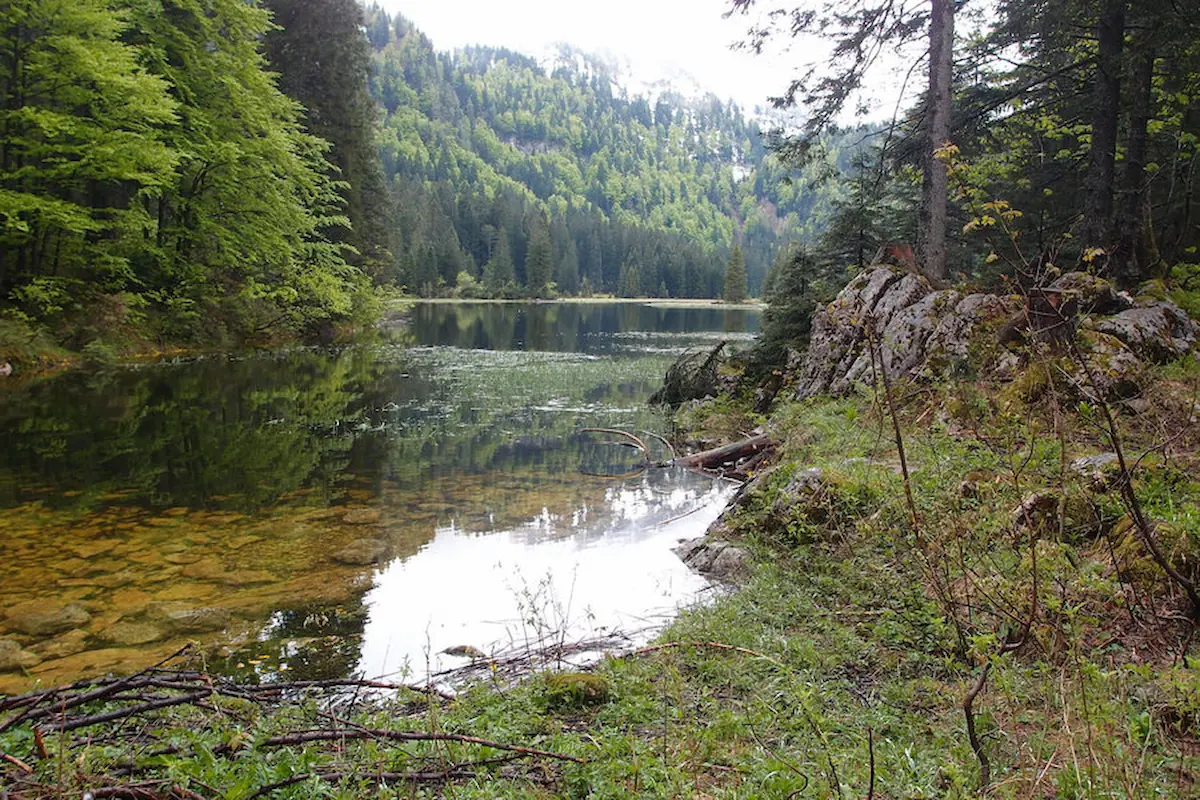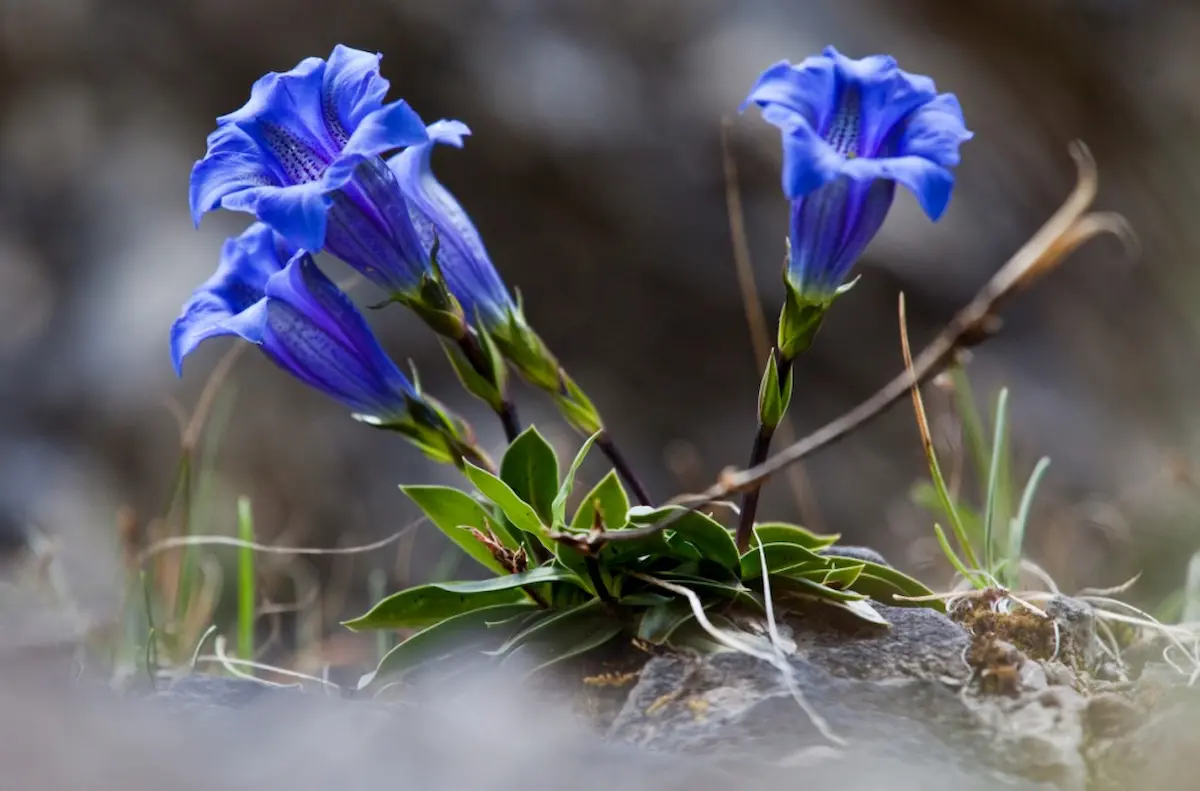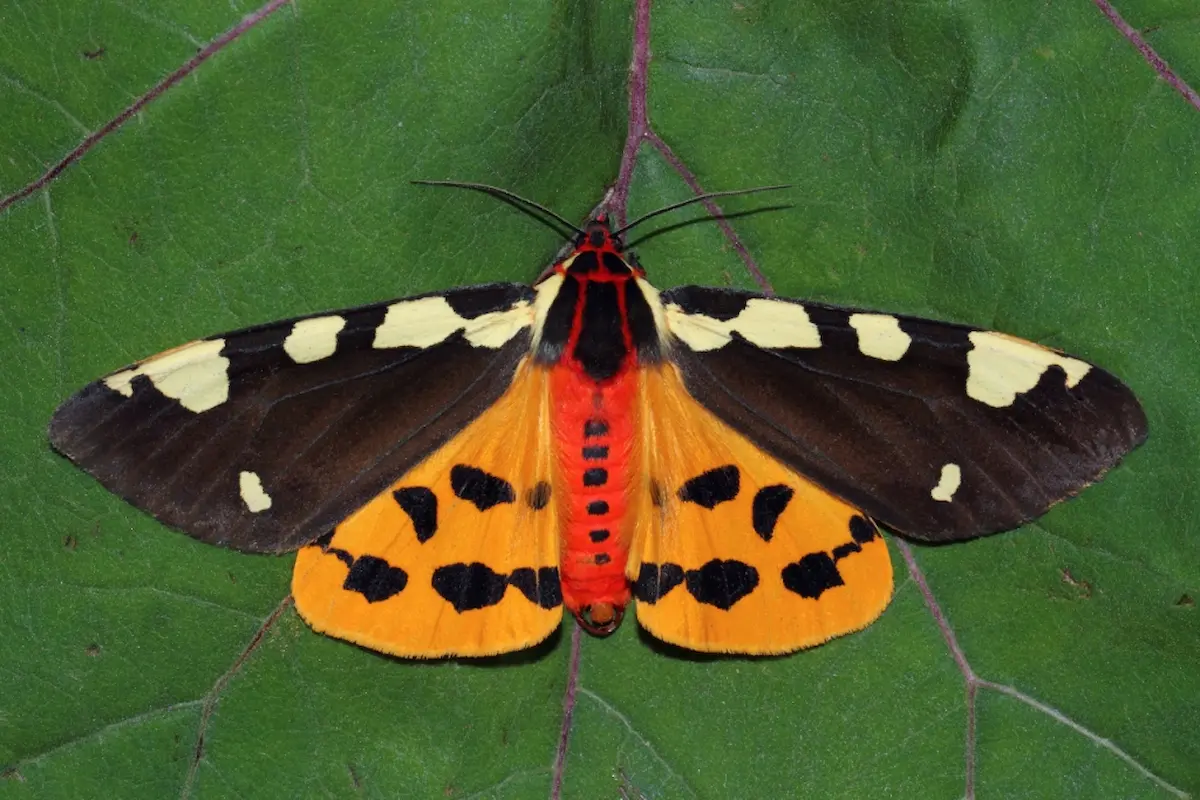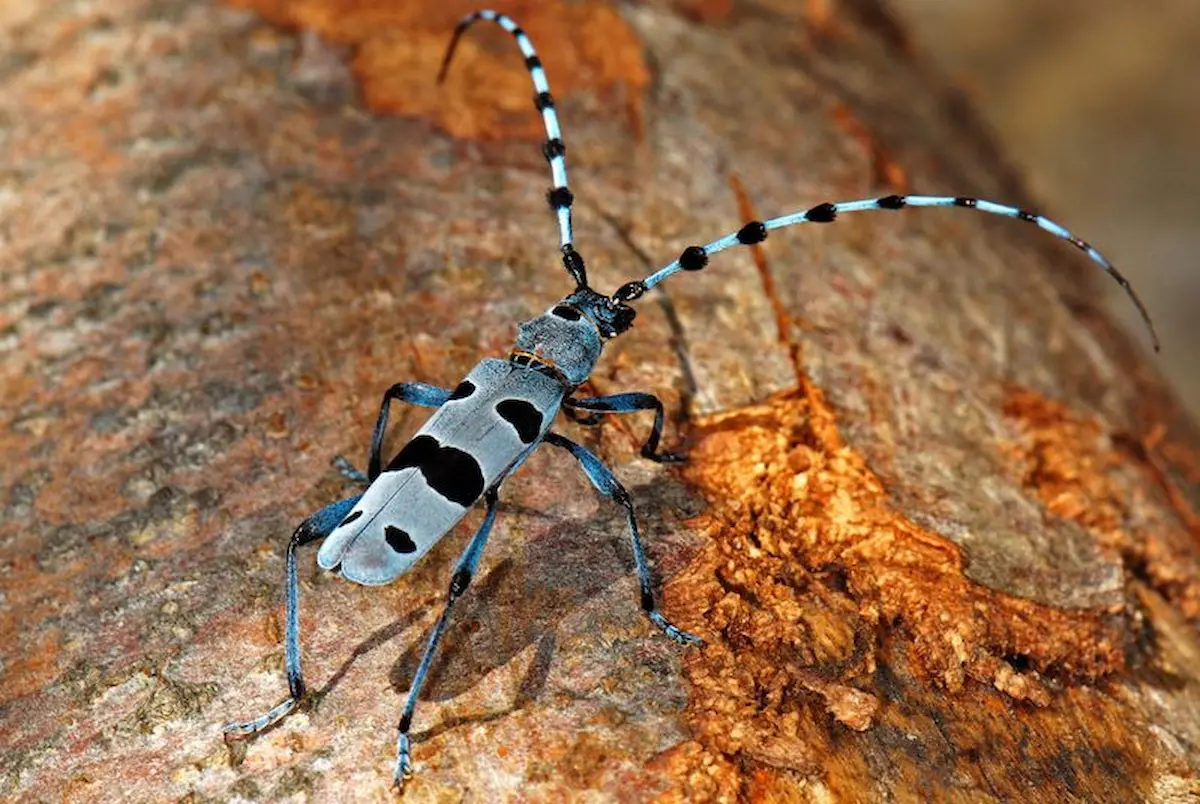The Dürrenstein-Lassingtal UNESCO World Heritage wilderness area is located in the northern Limestone Alps in Styria and Lower Austria. It contains the last remaining primary forest in the entire Alpine arc, an original forest that has never been used for forestry or has not been for a very long time. The centrepiece of the area is the Rothwald, a genuine primeval forest whose untouched state has been documented for more than 1,000 years. It is classified as an IUCN Class Ia protected area, which represents the highest standard of protection, while the rest of the wilderness region is a Class Ib protected area.
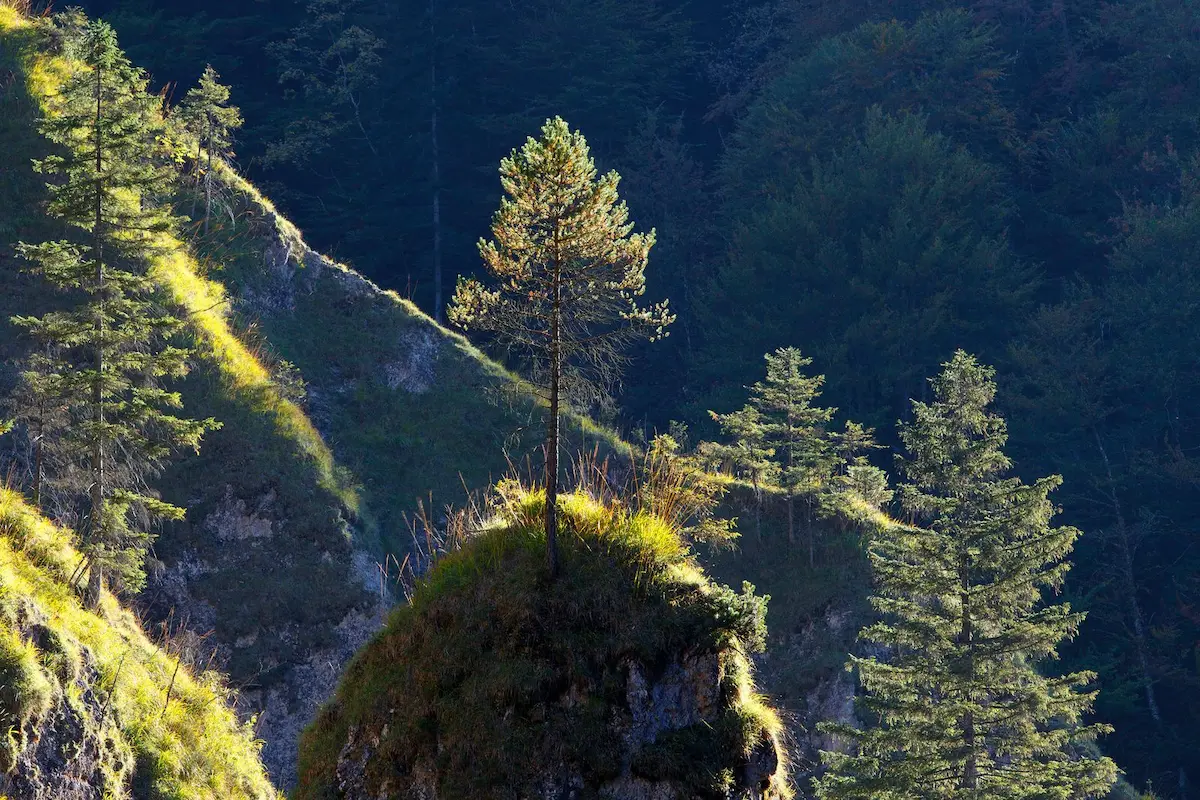
Topography and characteristics
Karstic alpine landscapes around the Dürrenstein and the Lassingbach valley characterise the area with an altitude of between 600 and almost 1,900 metres northwest of the Hochschwab massif. The Ybbs and Salza form the larger draining rivers. The protected area currently covers around 70 km2, of which 4 km2 is primeval forest in the narrow sense, i.e. the Rothwald. Of the total area, 88 per cent is currently spared from any human intervention, access is strictly regulated and forestry use is prohibited. European beech, fir and spruce are dominant and are each represented in roughly equal proportions at around 30 per cent. There are also other alpine tree species such as sycamore maple, ash and wych elm. The trees here reach their natural maximum age of up to 600 years. The forest is characterised by dead wood, which serves as a habitat for mosses, fungi and insects and as a food source for small forest animals and predators such as golden eagles and lynx. The forest is divided into closed stands, areas with dense and herbaceous undergrowth, dry, grassy clearings and steep hillside forests up to the krummholz zone. Sometimes meandering streams with constantly changing gravel banks and original moors provide rare habitats for herbs such as alpine aconite, monkshood, alpine camphor and mountain verbena.
History
The Rothwald owes its existence in part to a dispute between the Benedictine Abbey of Admont and the Gaming Charterhouse over the area in the fourteenth century and the commitment of the banker Albert Rothschild, who deliberately placed the Rothwald under protection in 1875. Geologically, the topography was created by the retreat of the Alpine glaciers at the end of the last ice age, the Würm Ice Age. Pioneer plants such as lichens and mosses initially formed the basis for the slowly developing woodland. There is evidence of human settlement around 5,500 BC in the area of Lunz am See.
Several expansions into Styrian territory in the twentieth century resulted in the current size. In 2003, the wilderness area was recognised as a protected area by the International Union for Conservation of Nature (IUCN).
In July 2017, together with the Kalkalpen National Park, it was declared Austria's first World Heritage Site ("Ancient and Primeval Beech Forests of the Carpathians and Other Regions of Europe") by UNESCO, making it part of just over 200 World Heritage Sites worldwide.
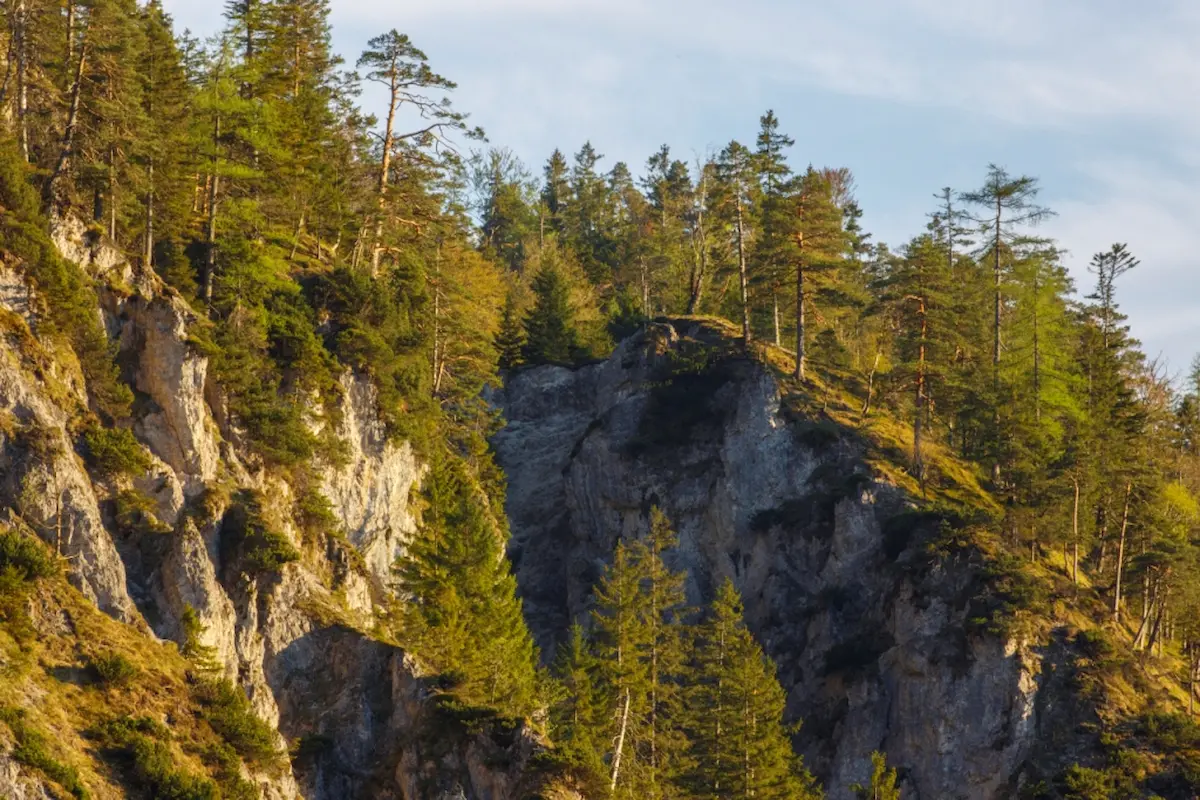
The "House of Wilderness" information centre
In the main town of Lunz am See, the protected area administration is located in the "House of Wilderness", an education and information centre where visitors can learn about the fascination and uniqueness of this magnificent natural region in a vivid way. The House of Wilderness offers interactive exhibitions over an area of 700 square metres, including augmented reality, a 180-degree cinema, conference and seminar rooms and a shop. It is particularly important to the operators to sensitise visitors to the vulnerability and complexity of natural environments and to keep the damage that inevitably results from entering the natural area itself within acceptable limits through the numerous offers. Guided hikes are offered; unorganised hiking is only possible on the few designated paths.
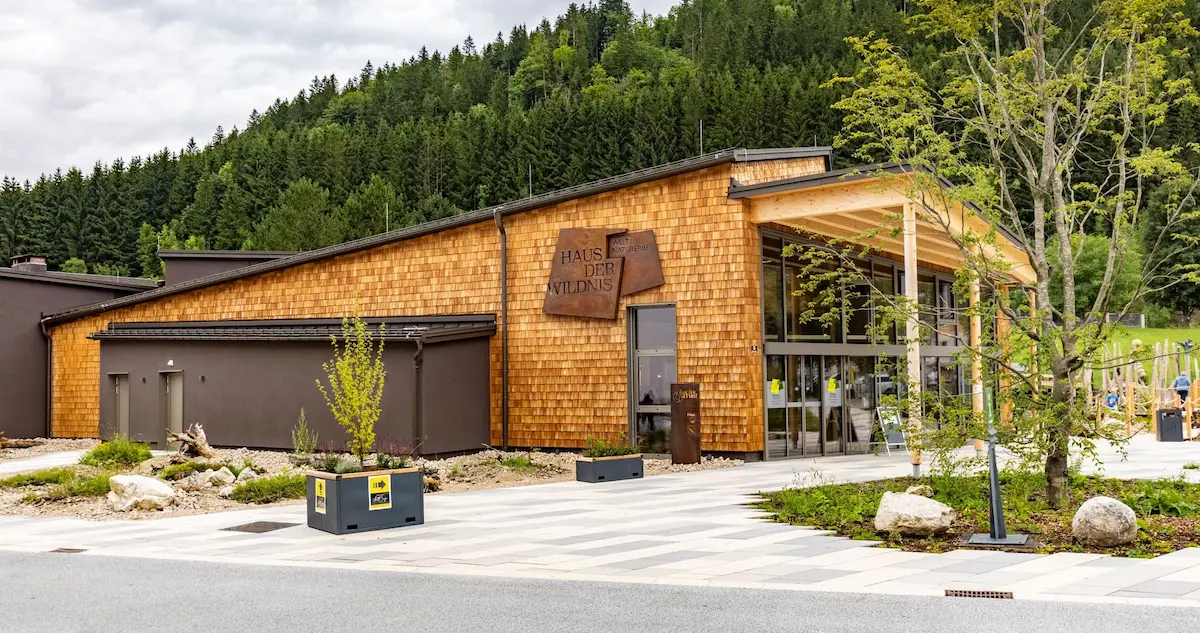
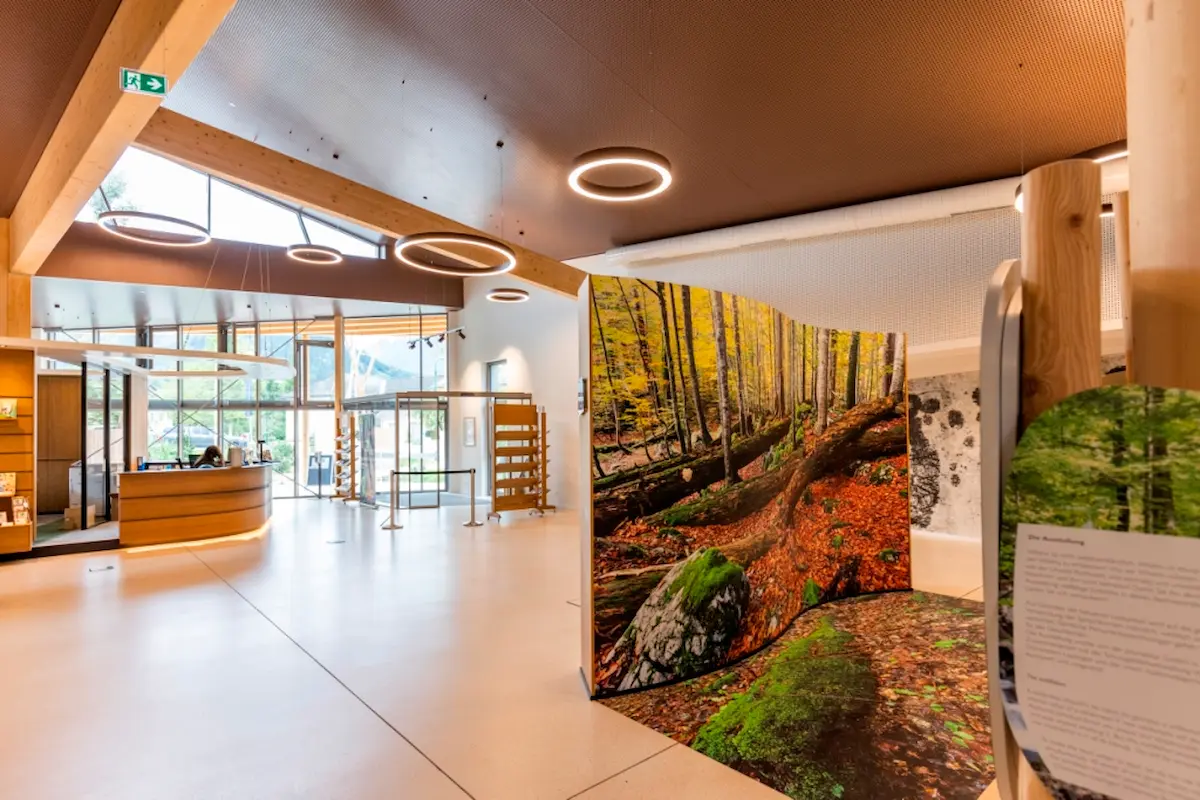
Ecological significance
The ecological value of the area is manifold and ranges from the binding or recovery of carbon dioxide from the air in the old giant trees and in the soil, to the lowering of regional temperatures and the safeguarding of water quality and quantity, to the foundations of a high level of biodiversity, e.g. in the abundant deadwood. Around 80 bird and 40 mammal species benefit from an intact food chain formed by mosses (8280 species), lichens, fungi (800 species) and countless insects. The natural streams retain the rainwater, the vegetation stores it and thus provides a climatic balance and habitats, e.g. for the Alpine newt.
However, the areas are too small and too disparate to be able to adequately fulfil their important tasks without external support. What is needed is a network of biotopes that make "migrations" possible and thus refresh the gene pools, in other words: more protected land is needed. Consequently, the task has been set of removing immanent agricultural land from utilisation and creating a secondary forest with a primeval forest character alongside the primary forest, for which, however, additional financial resources are required.
The Lynx Trail
The "Lynx Trail", a themed long-distance hiking trail to protect the extremely rare forest cat, runs over eleven daily stages through three nature reserves with an alpine character, including through part of the protected area and up to the Dürrenstein summit itself. The trail, which aims to sensitise hikers to the lynx, connects the Northern Limestone Alps National Park and the Gesäuse National Park with the wilderness area. The result is a continuous trail through "Austria's wild centre" over 220 kilometres and 12,000 metres in altitude from Upper Austria (Reichraming) via Styria to Lower Austria (Lunz am See). The trail has stages of varying character, some of which involve easy via ferratas, while others are rather flat and run through pre-alpine landscapes. This means that the highlights are sometimes pure pleasure hiking, sometimes rock scrambling and magnificent, wild panoramas. Always in focus: the forest and its secret inhabitants.
Both the entire trail and themed multi-day stages can be booked from May to the end of October, with the organiser taking care of everything from booking accommodation and meals to transporting luggage and mobility services.
By the way: Organised walking of the trail supports the preservation of the landscape and the lynx population with a contribution of 10 euros per person.
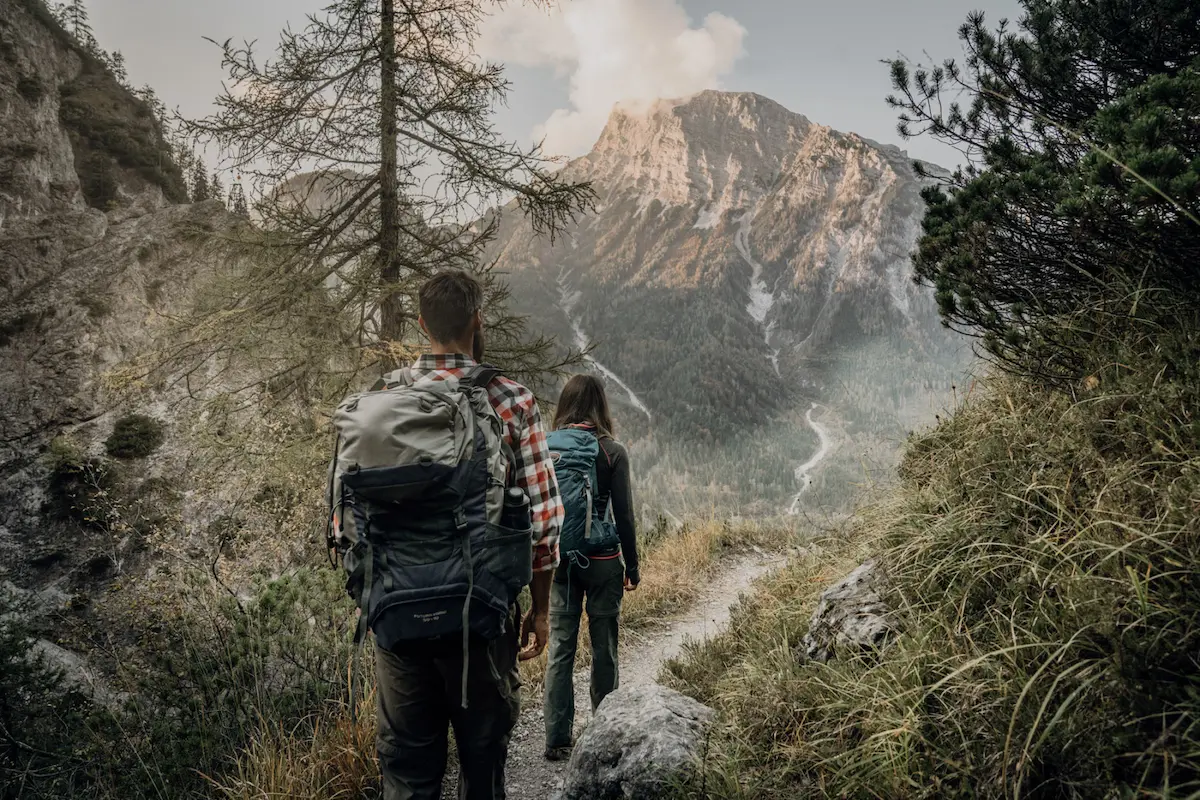
Climate partnership wilderness area Dürrenstein-Lassingtal
The Austrian Federal Forests (ÖBf), which provide a large part of the land, the State Institute of Natural Resources and Life Sciences (BoKU) and the Eberswalde University for Sustainable Development are involved in the climate partnership in a central role. This ensures scientific monitoring and evaluation of the effectiveness of the renaturalisation measures. Each climate partnership with external partners, primarily SMEs, is contractually agreed for a period of ten years and can be extended indefinitely.
A central climate partnership exists between the natural cosmetics manufacturer RINGANA and the wilderness area. The company is providing the financial means to permanently remove 139 hectares of forest from use, i.e. for 80 years. This will offset more than 833 tonnes of CO2 emissions per year, which will also benefit the carbon footprint of the East Styrian company. In addition, RINGANA is committed to continuously promoting the involvement of companies in the climate partnership. After all, the environment and people will only benefit if other potential supporters develop an awareness of their responsibility for a future worth living and realise this through appropriate action. A climate partnership in favour of the magnificent Dürrenstein-Lassingtal wilderness area offers a good opportunity for this.
https://www.wildnisgebiet.at
https://www.wildnisgebiet.at/haus-der-wildnis
https://luchstrail.at
https://www.ringana.com/blog/ringana-rethink
Text: Werner Köstle
Pictures: Theo Kust: Dürrenstein-Lassingtal Wilderness Area/Hans Glader/Gerhard Rotheneder, House of Wilderness, Lynx Trail

